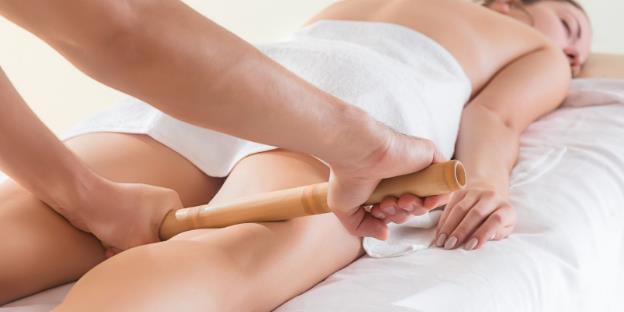Unveiling the Truth About Foam Rolling and Cellulite Reduction
Oct 31, 2023 By Nancy Miller
Cellulite, often called the dimpled or "orange peel" texture that can appear on the skin, is a common concern among many individuals. It is crucial to emphasize that Cellulite is a natural and common occurrence, and there is no reason to feel ashamed. However, it's understandable that some people may seek ways to minimize its visibility.
In recent years, Foam Rolling has emerged as a popular method for potentially addressing this concern. The question that arises is whether Foam Rolling genuinely can reduce the appearance of Cellulite or if it is merely a fleeting fitness trend. This article explores the science underpinning Foam Rolling and its potential effectiveness in treating Cellulite.
What Is Cellulite?
Before delving into the connection between Cellulite and Foam Rolling, it's paramount to grasp the nature of Cellulite itself. Cellulite manifests when fat exerts pressure on the underlying connective tissue, leading to the skin's characteristic dimpled or lumpy appearance. It predominantly surfaces on the buttocks and thighs and can affect individuals of varying body shapes and sizes.
Contributing factors encompass genetics, hormonal influences, and lifestyle choices, all influencing the development and visibility of Cellulite. It's crucial to emphasize that Cellulite, though aesthetically bothersome for some, does not pose a health threat. Nevertheless, it remains a common concern, prompting many to seek potential remedies such as Foam Rolling.
The Science Behind Foam Rolling
Foam rolling entails the utilization of a foam roller to exert pressure on targeted areas of the body, serving as a self-myofascial release (SMR) technique. It's often used as part of a warm-up or cool-down routine for workouts and is believed to help with muscle recovery, flexibility, and even Cellulite Reduction.
The concept behind Foam Rolling is rooted in myofascial release therapy, which targets the fascia, a connective tissue surrounding muscles. It's thought that using a foam roller to apply pressure to the fascia can release tension and improve blood flow to the area, potentially reducing the appearance of Cellulite.
Can Foam Rolling Reduce Cellulite?
The question remains: can Foam Rolling help reduce the look of Cellulite? While there is limited scientific research on this topic, some anecdotal evidence and theories suggest that it may have some positive effects. Here's what we know so far:
Improved Blood Circulation
Foam Rolling enhances blood circulation in the specific areas it targets. This heightened blood flow is vital in potentially aiding the removal of excess fluids and toxins from the tissues. The idea is that by facilitating better circulation, Foam Rolling may, in theory, contribute to reducing the visibility of Cellulite.
Improved blood flow promotes better nutrient and oxygen supply to the cells and assists in carrying away metabolic waste products. This improved fluid exchange can result in a healthier, more vibrant appearance in the treated areas.
Breakdown of Adipose Tissue
When executed with sufficient pressure, Foam Rolling may facilitate the breakdown of fatty tissue beneath the skin's surface, commonly known as fat cells. While it's important to remember that Cellulite may not be eliminated, this process can potentially create a smoother and more even skin texture.
By directly targeting fatty tissue, Foam Rolling can temporarily influence the distribution and appearance of fat, leading to a subtle improvement in the skin's visual texture.
Enhanced Lymphatic Drainage
Advocates of Foam Rolling often assert that this practice stimulates the lymphatic system. This stimulation can be instrumental in removing waste products and toxins from the body. In the context of Cellulite, this is particularly relevant as it can reduce its visibility.

The lymphatic system acts as the body's waste disposal system, and by optimizing its function, Foam Rolling may help keep the skin in the treated areas looking smoother and more even.
Temporary Plumping Effect
Foam Rolling has an intriguing effect on the skin – it can temporarily create a plumping effect. This is achieved by promoting increased blood flow to the targeted regions and reducing tissue stiffness. While this effect is not a permanent solution, it can provide a short-term aesthetic improvement.
By smoothing out the skin and reducing the appearance of dimples, Foam Rolling can offer a more radiant and toned appearance, particularly in the brief period following a Foam Rolling session.
However, it's crucial to note that the effects of Foam Rolling on Cellulite are not permanent. The benefits mentioned above are typically temporary, and maintaining results would likely require consistent Foam Rolling sessions.
How to Incorporate Foam Rolling into Your Routine
If you're interested in trying Foam Rolling as part of your Cellulite Reduction strategy, here's how to get started:
Choose the Right Foam Roller: Various foam rollers are available, each with different firmness levels. Beginners may want to start with a softer roller, while more experienced users can opt for firmer options.

Proper Technique: To maximize the benefits and minimize the risk of injury, it's essential to use proper Foam Rolling techniques. Roll slowly over the target area, applying gentle to moderate pressure.
Consistency is Key: Consistency is essential to any fitness or wellness routine. Aim to incorporate Foam Rolling into your routine several times weekly for the best results.
Consult a Professional: If you have specific concerns or medical conditions related to Cellulite, it's a good idea to consult a healthcare professional or a fitness trainer for guidance.
The Bottom Line
While Foam Rolling may offer some temporary benefits in reducing the appearance of Cellulite, it's not a miracle solution. Cellulite is a natural body part and may not be eliminated. The effectiveness of Foam Rolling varies from person to person, and results may be limited to temporary improvements.
When contemplating the incorporation of Foam Rolling into your Cellulite Reduction plan, remember that it should complement a comprehensive approach to well-being, which includes maintaining a balanced diet, engaging in regular exercise, and fostering a positive body image. Embracing your body and its natural variations is essential, regardless of whether or not you choose to foam roll.







